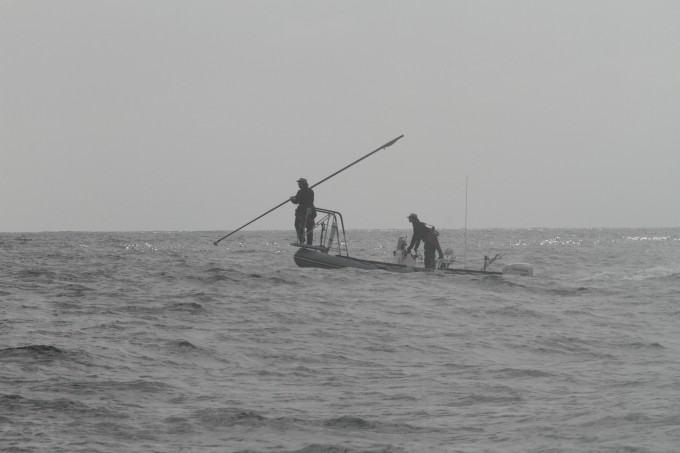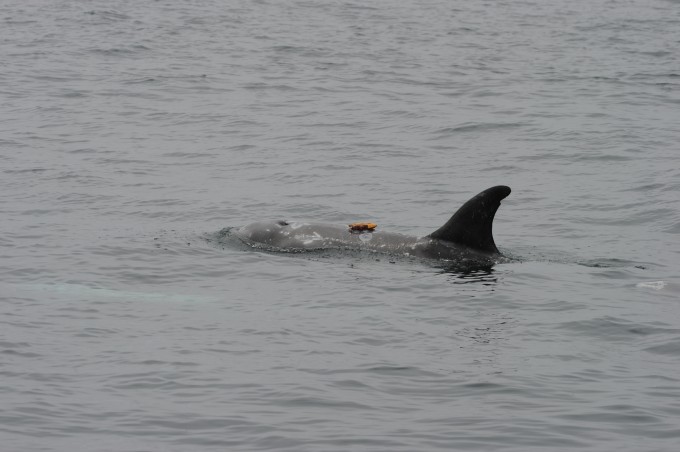We are happy to report on the start of our SOCAL Behavioral Response Study for the 2013 field season (SOCAL-13). After several days of field efforts offshore we are back in internet range to provide an update on our progress. As a reminder for those of you following the blog or others that have just found it, we have lots of general information, photos, paper reprints, and informative links at the project website <www.socal-brs.org>. Additionally, as noted in many of these documents and with photo credits, our work is authorized under U.S. NMFS permit # 14534, Channel Islands National Marine Sanctuary permit #2010-004, and are in accordance with a federal consistency determination of the California Coastal Commission. We are very fortunate in this project (thanks to the support of the U.S. Navy’s Living Marine Resources Research Program and the Office of Naval Research) to be able to study some amazing animals, measure aspects of behavior that are poorly known in many regards, and make controlled experimental measurements of their responses to sound. We have been committed throughout to an open and transparent process in providing information on our planned work and our progress. You can find project reports and public summary documents of planned efforts at the website given above.

The offshore weather hasn’t been great for the kinds of work we do (tagging marine mammals using non-invasive methods from small boats – see photo above). We have gotten to work early in the mornings in reasonable conditions and have typically found rougher to unworkable winds later in the day. Fortunately based on our experiences in the areas around the Channel Islands we adapted and found workable conditions and individuals of our focal study species with which to work. We have tagged two Risso’s dolphins (see below) as well as a blue whale in the past two days and conduct two experimental sequences. We have also had several acoustic and visual detections of Cuvier’s beaked whales – one of the highest priority yet most difficult species to work with – although we haven’t managed to tag one yet. We are ashore tonight to load up on provisions and fuel and reposition tomorrow for an offshore weather window starting Sunday that looks quite favorable. Look for more posts forthcoming in the next few weeks of phase I of SOCAL-13 – we will post information on our progress as we are able with internet access. Thanks for the interest and comments on the project to date – as mentioned, please see <www.socal-brs.org> for more details.

Rissos dolphin with a Digital Acoustic Recording Tag attached with suction cups during SOCAL-13 (taken under NMFS permit #14534, credit: A. Friedlaender)
